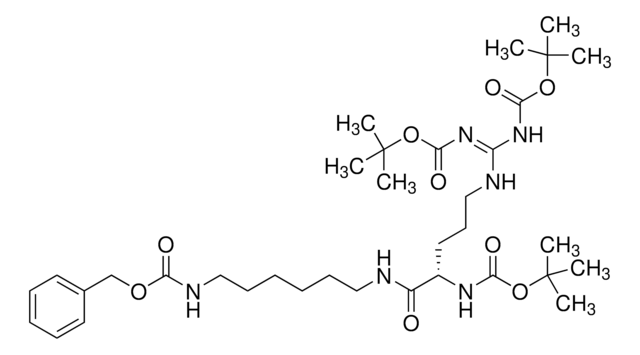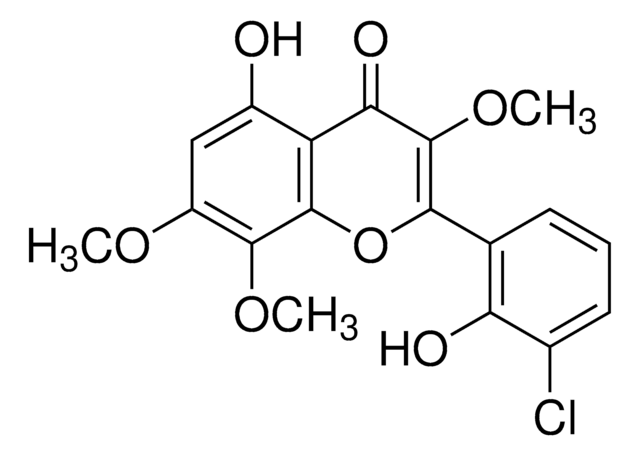R108
Ro 41-0960
solid
Sinónimos:
2′-Fluoro-3,4-dihydroxy-5-nitrobenzophenone
About This Item
Productos recomendados
formulario
solid
Nivel de calidad
condiciones de almacenamiento
protect from light
color
yellow
solubilidad
H2O: slightly soluble <0.7 mg/mL
45% (w/v) aq 2-hydroxypropyl-β-cyclodextrin: 1.0 mg/mL
ethanol: soluble
temp. de almacenamiento
2-8°C
cadena SMILES
Oc1cc(cc(c1O)[N+]([O-])=O)C(=O)c2ccccc2F
InChI
1S/C13H8FNO5/c14-9-4-2-1-3-8(9)12(17)7-5-10(15(19)20)13(18)11(16)6-7/h1-6,16,18H
Clave InChI
RQPAUNZYTYHKHA-UHFFFAOYSA-N
Información sobre el gen
human ... COMT(1312)
Aplicación
Acciones bioquímicas o fisiológicas
Características y beneficios
Precaución
Código de clase de almacenamiento
11 - Combustible Solids
Clase de riesgo para el agua (WGK)
WGK 3
Punto de inflamabilidad (°F)
Not applicable
Punto de inflamabilidad (°C)
Not applicable
Equipo de protección personal
Eyeshields, Gloves, type N95 (US)
Certificados de análisis (COA)
Busque Certificados de análisis (COA) introduciendo el número de lote del producto. Los números de lote se encuentran en la etiqueta del producto después de las palabras «Lot» o «Batch»
¿Ya tiene este producto?
Encuentre la documentación para los productos que ha comprado recientemente en la Biblioteca de documentos.
Nuestro equipo de científicos tiene experiencia en todas las áreas de investigación: Ciencias de la vida, Ciencia de los materiales, Síntesis química, Cromatografía, Analítica y muchas otras.
Póngase en contacto con el Servicio técnico








